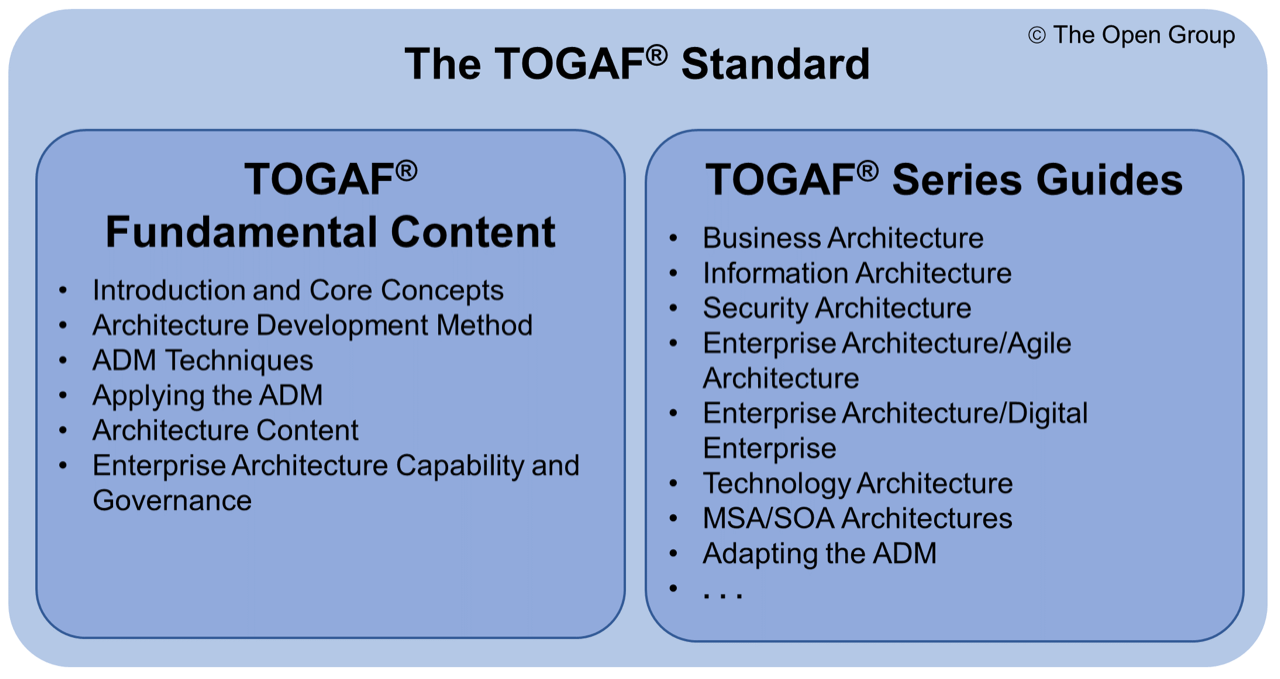The eagerly awaited TOGAF Standard, 10th Edition has finally arrived, promising a plethora of enhancements and features to streamline the adoption of best practices in Enterprise Architecture. Let’s delve into the key aspects that make TOGAF 10 a game-changer for organizations of all sizes.
Introduction
In the ever-evolving landscape of Enterprise Architecture, the arrival of TOGAF Standard, 10th Edition marks a pivotal moment. Designed to simplify the adoption of best practices, this edition brings forth a host of innovations that promise to reshape the way organizations approach and implement their architectural frameworks. From universal concepts to tailored configurations, TOGAF 10 sets the stage for a new era of efficiency and adaptability. Let’s embark on a journey to unravel the key features that make TOGAF 10 a cornerstone for architects navigating the complexities of the modern business world.

What’s New?
1. Universal Concepts and Best Practices:
One of the standout features of TOGAF 10 is its emphasis on universal concepts and proven best practices. The standard acts as a guide, directing practitioners to enduring principles that have stood the test of time. This not only provides a solid foundation for enterprise architecture but also ensures a seamless integration of best practices into organizational processes.
2. Support for a Diverse Range of Organizations:
TOGAF has always been versatile, catering to businesses of varying sizes and sectors. The 10th Edition continues this trend, being utilized by small, medium, and large commercial enterprises, government departments, non-government public organizations, and defense agencies. This adaptability showcases TOGAF’s relevance across diverse industries and underscores its role as a go-to framework for Enterprise Architecture.
3. Expanded Guidance for Efficiency:
With significantly expanded guidance and how-to material, TOGAF 10 empowers organizations to operate efficiently and effectively in an ever-evolving landscape. The broad range of use-cases addressed by the standard includes agile enterprises and those undergoing digital transformation. This expansion reflects the evolving nature of business processes and IT landscapes, ensuring that TOGAF remains a valuable asset for modern organizations.
4. Designed for Variable Configurations:
Acknowledging the dichotomy of common universal concepts and variable detailed configurations, TOGAF 10 provides a framework that can be tailored to the unique needs of different organizations. This design flexibility enables practitioners to adapt the standard to their specific contexts, fostering a more personalized and effective application of Enterprise Architecture principles.
5. Document Structure for Architectural Success:
The document structure of TOGAF 10 is a strategic move to cater to architects’ needs for more, better, and topical guidance. It is divided into two main components—the TOGAF Fundamental Content and the TOGAF Series Guides. The Fundamental Content serves as the essential scaffolding, providing the foundational elements, while the Series Guides offer advice on configuring this scaffolding. This structure aims to guide architects in delivering top-notch Enterprise Architecture that aligns with the needs of their stakeholders and organizations.
Conclusion
TOGAF 10 stands as a beacon of innovation in the field of Enterprise Architecture. Its focus on universal concepts, expanded guidance, adaptability, and a structured document format positions it as a valuable asset for organizations navigating the complexities of the modern business landscape. As the business world continues to evolve, TOGAF 10 provides a robust framework for architects to navigate change, foster innovation, and drive organizational success.

